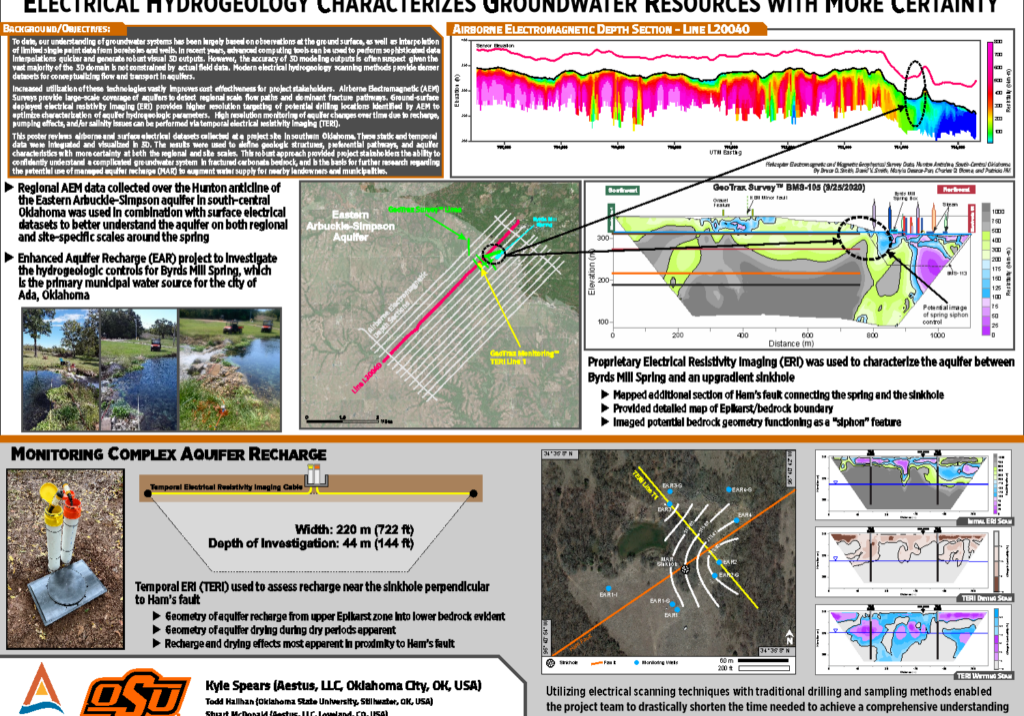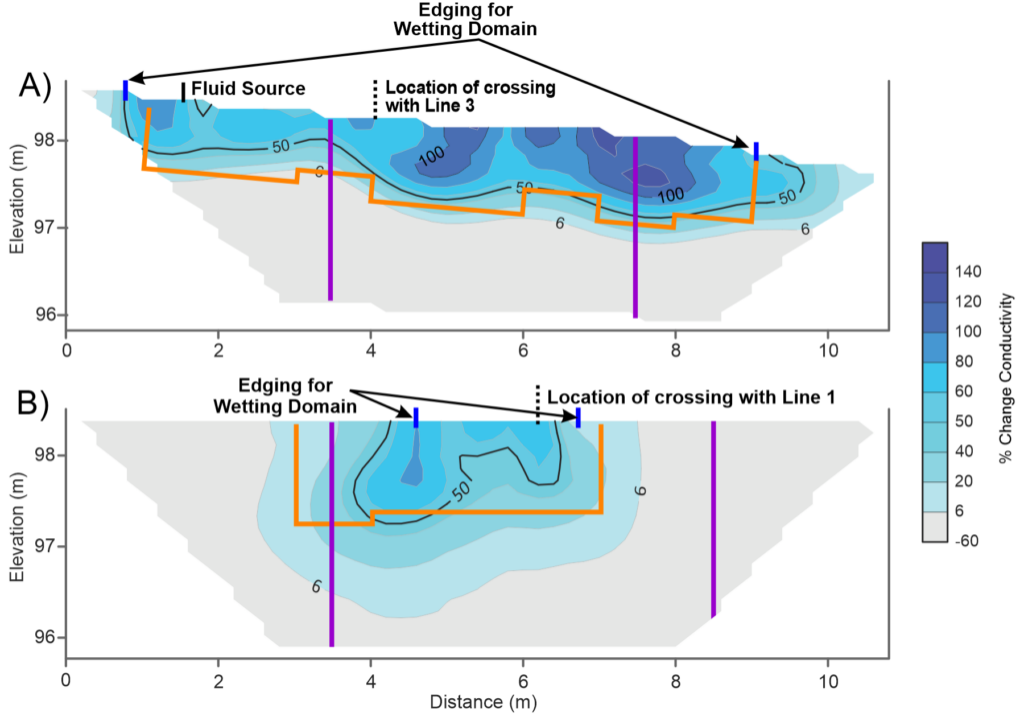Aestus Presents “The Next Era of Site Characterization Using Electrical Hydrogeology” at 2024 Western Groundwater Congress
Aestus’ Samantha Frandsen, Hydrogeophysicist/Project Manager, presented “The Next Era of Site Characterization Using Electrical Hydrogeology” at the Western Groundwater Congress on Tuesday, October 8, 2024.
Abstract:
Site characterization field efforts since the 1980s have demonstrated that useful conceptual site models (CSMs) typically require ultra-high data density to accurately predict subsurface contaminant distribution and groundwater transport. Some research project data showed that sites with thousands of monitoring well locations still had insufficient data density to fully characterize complex subsurface conditions, and left questions regarding conditions between the monitoring wells.
Specialty electrical resistivity imaging (ERI) has been applied to site characterization for decades with remarkable success and increasing use. This technology provides continuous scans of the subsurface to build a robust conceptual site model (CSM), which can delineate hydrogeologic conditions, preferential contaminant and/or groundwater flowpaths, and presence of microbial colonies. This ultra-high resolution CSM provides for better site and remedial design characterization of contaminated sites. Additionally, temporal electrical resistivity imaging (TERI) can be used to provide high resolution monitoring of remediation treatments and verify their effectiveness.
This presentation will review electrical hydrogeology implementation across a variety of site types, and how it can help environmental professionals increase CSM certainty and focus remediation to close sites faster at lower cost. A case study example summarizes the focused remediation of a 2,000-gallon diesel release near a municipal supply well screened in dolomite karst. Continuous ERI remedial design characterization imagery guided drilling which confirmed free-phase and dissolved phase contaminated zones to target successful remediation in less than two years. Subsequent TERI imaging data provided corroborating evidence of complete remediation and minimized trailing liabilities.

